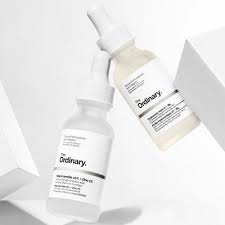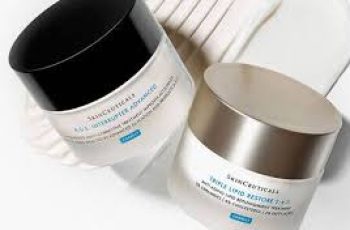
Can Niacinamide and Hyaluronic Acid Be Used Together? A Complete Guide
Skincare has come a long way. More and more people are getting savvy about what goes into their products and how different ingredients work.
Today, many ask if niacinamide and hyaluronic acid can be used together. The short answer is yes! But there’s a bit more to it than just mixing two bottles.
Let’s dive deeper and unpack how these two skincare superheroes interact and how to get the best out of them when adding to your routine.
What Are Niacinamide and Hyaluronic Acid?
Before we talk about combining these ingredients, it helps to understand what each one does. Niacinamide is a form of vitamin B3 that’s loved for its versatility and ability to improve overall skin health.
It’s known to regulate oil production, reduce redness, minimize pores, and strengthen the skin’s barrier.
Hyaluronic acid, on the other hand, is a powerful humectant. It’s a natural molecule found in our skin that can hold up to 1,000 times its weight in water.
This means it’s incredible at drawing moisture into the skin, making it plump, smooth, and hydrated.
Both ingredients address common skin concerns like dryness, dullness, and signs of aging. And together? They create a dream team.
Can You Use Niacinamide and Hyaluronic Acid Together?
Yes, you absolutely can! These two ingredients complement each other beautifully. Both are water-based and have great compatibility in formulations.
Niacinamide focuses on strengthening and protecting the skin, while hyaluronic acid ensures it stays deeply hydrated.
The key is how and when you apply them for maximum benefit.
Which One Should You Apply First: Hyaluronic Acid or Niacinamide?
When layering skincare products, the general rule is to apply the thinnest texture first. Since hyaluronic acid is often in a lightweight serum or essence form, it usually goes on first.
This allows it to penetrate and hydrate the skin deeply.
Next, you apply niacinamide, which also often comes in serum form. Niacinamide will then work to regulate oil production, reduce pore size, and improve skin tone.
Applying niacinamide after hyaluronic acid locks in that hydration while delivering its skin-strengthening benefits.
Once you finish with these serums, you can apply your moisturizer or sunscreen. This locks everything in and protects the skin’s surface.
Why Use Them Together?
Both ingredients hydrate the skin but in different ways. Hyaluronic acid acts like a sponge, pulling water into the skin’s surface.
Niacinamide works at a cellular level, strengthening the skin’s barrier and helping it hold onto that moisture longer.
Together, they offer a double hydration boost. Your skin will look plumper, smoother, and more radiant. Plus, niacinamide helps reduce inflammation and irritation, so your skin feels calm and balanced.
If your skin is prone to dryness or sensitivity, this combo is especially helpful.
Different Product Types Containing Niacinamide and Hyaluronic Acid
You’re not limited to serums. Both ingredients show up in a variety of products. These include:
Face washes and cleansers, Serums, Moisturizers, Face oils, Cream-based masks, Sheet masks
Each product type offers a different level of contact time with your skin. For example, cleansers are rinsed off quickly, so their effects are brief. Serums stay on the skin longer, delivering more potent benefits.
Choosing a serum with a concentrated dose of either niacinamide or hyaluronic acid is a great way to get noticeable results.
How Long Does It Take to See Results?
This depends on the product type and how consistently you use it. Serums tend to show visible changes faster because they remain on your skin. Face washes or masks may support your skin but work more subtly over time.
Also, your skin’s condition, age, and environment play a role. Generally, you may start seeing improvements in hydration and texture within 2 to 4 weeks with regular use.
Safety First: Patch Test Before Use
As with any new skincare product, it’s essential to do a patch test. Apply a small amount on your forearm and wait 24 hours to check for any irritation or allergic reaction.
This helps you avoid adverse effects when applying it on your face.
If you have sensitive skin or conditions like eczema, consult your dermatologist before introducing new active ingredients.
Why Separate Serums Might Work Best
If you want maximum benefits, consider using two separate serums: one focused on hyaluronic acid and the other on niacinamide.
This way, each product can deliver a higher concentration of the active ingredient without overwhelming your skin.
Some combined products may have lower concentrations or additional ingredients that dilute their effectiveness.
Separating them gives you more control over how much and how often you use each ingredient.
Can You Use Niacinamide Every Day?
Yes! Niacinamide is gentle enough for daily use—morning and night. Many people find applying it in the morning keeps their skin comfortable and prepped for makeup or sunscreen.
Using it at night helps repair damage from UV rays, pollution, and environmental stressors.
Because niacinamide supports your skin’s barrier and calms inflammation, daily use promotes a smoother, more even complexion over time.
Can You Use Hyaluronic Acid Every Day?
Absolutely. Hyaluronic acid is safe and beneficial for twice-daily use as well. Applying it right after cleansing in the morning and evening helps lock moisture into your skin.
Remember, hyaluronic acid works best when applied to damp skin and followed by a moisturizer. This helps seal in hydration and prevents water from evaporating.
Avoid putting hyaluronic acid under sunscreen or moisturizer, as it may struggle to penetrate and perform its best.
The Science Behind Their Benefits
Niacinamide is a form of vitamin B3 and supports the skin in several ways. It strengthens the outer skin layer, reduces redness, minimizes pores, and balances oil production.
It also helps protect the skin from damage caused by free radicals—unstable molecules from pollution and UV rays that accelerate aging.
Hyaluronic acid is a molecule naturally produced by our bodies. As we age, its levels decline, causing dryness and loss of volume. Using it topically helps replenish hydration, plump fine lines, and smooth texture.
Together, they work synergistically to keep your skin looking youthful and resilient.
Common Myths About Niacinamide and Hyaluronic Acid
There are many myths floating around, like “you shouldn’t mix niacinamide with vitamin C” or “hyaluronic acid causes breakouts.” Let’s clear those up.
Niacinamide and vitamin C can be used together; any tingling sensation usually means your skin is sensitive, not that the combo is harmful.
Hyaluronic acid rarely causes breakouts unless your product has comedogenic ingredients. The acid itself hydrates without clogging pores.
So, don’t be afraid to experiment and find what works best for your skin type.
Building Your Skincare Routine With These Ingredients
Here’s a simple routine example using both:
Cleanse your face with a gentle cleanser.
Apply a hyaluronic acid serum to damp skin.
Follow with a niacinamide serum.
Lock in moisture with your favorite moisturizer.
Finish with sunscreen in the morning.
For evening, swap sunscreen for a nourishing night cream.
Final Thoughts
Niacinamide and hyaluronic acid are both star ingredients for healthy, hydrated, and glowing skin. Using them together maximizes hydration and improves skin texture and tone.
Start slowly and build your routine, paying attention to how your skin reacts. Over time, you’ll see smoother, plumper, and more balanced skin.
Want more skincare tips and expert advice?
Join the Beauty Insiders community on Procoal’s Instagram for daily tips, tutorials, and product launches. Have questions? Slide into our DMs!
Don’t forget to subscribe to The Green Sofa on YouTube for in-depth skincare videos you’ll love.


